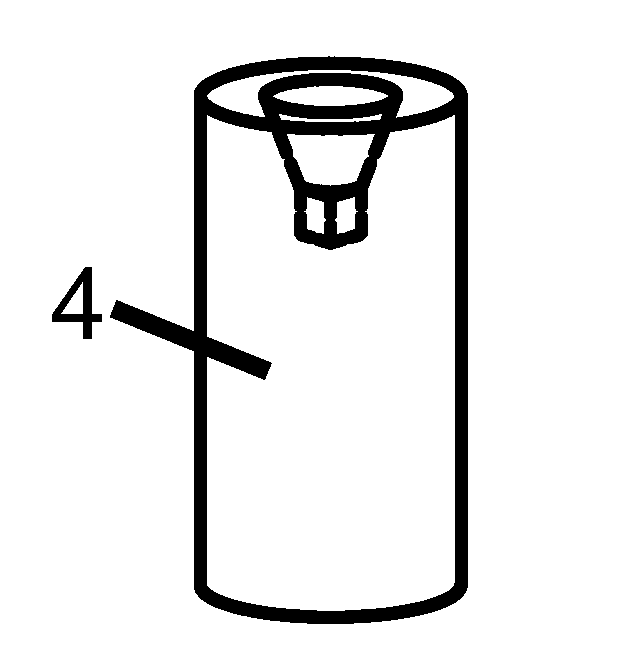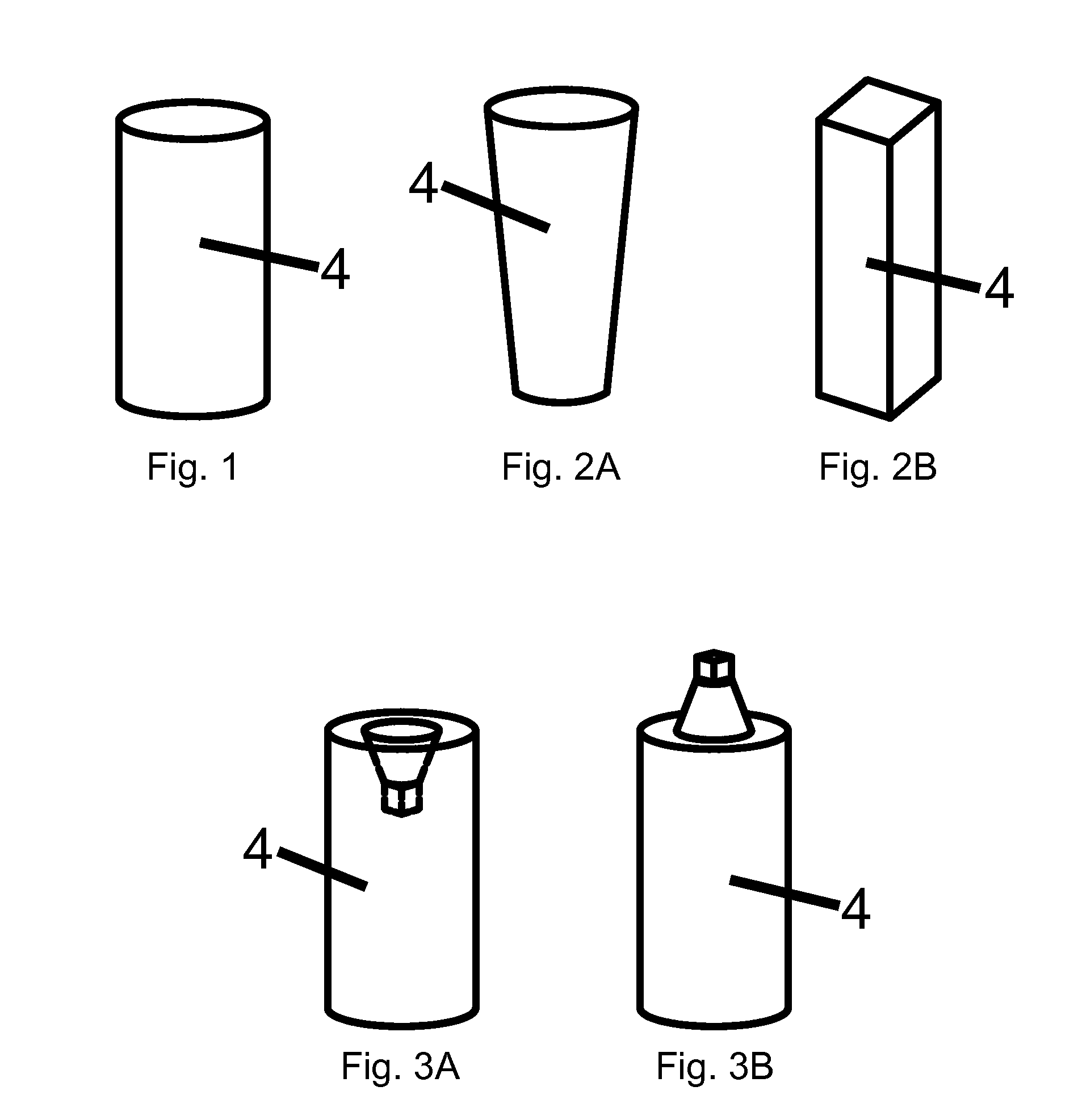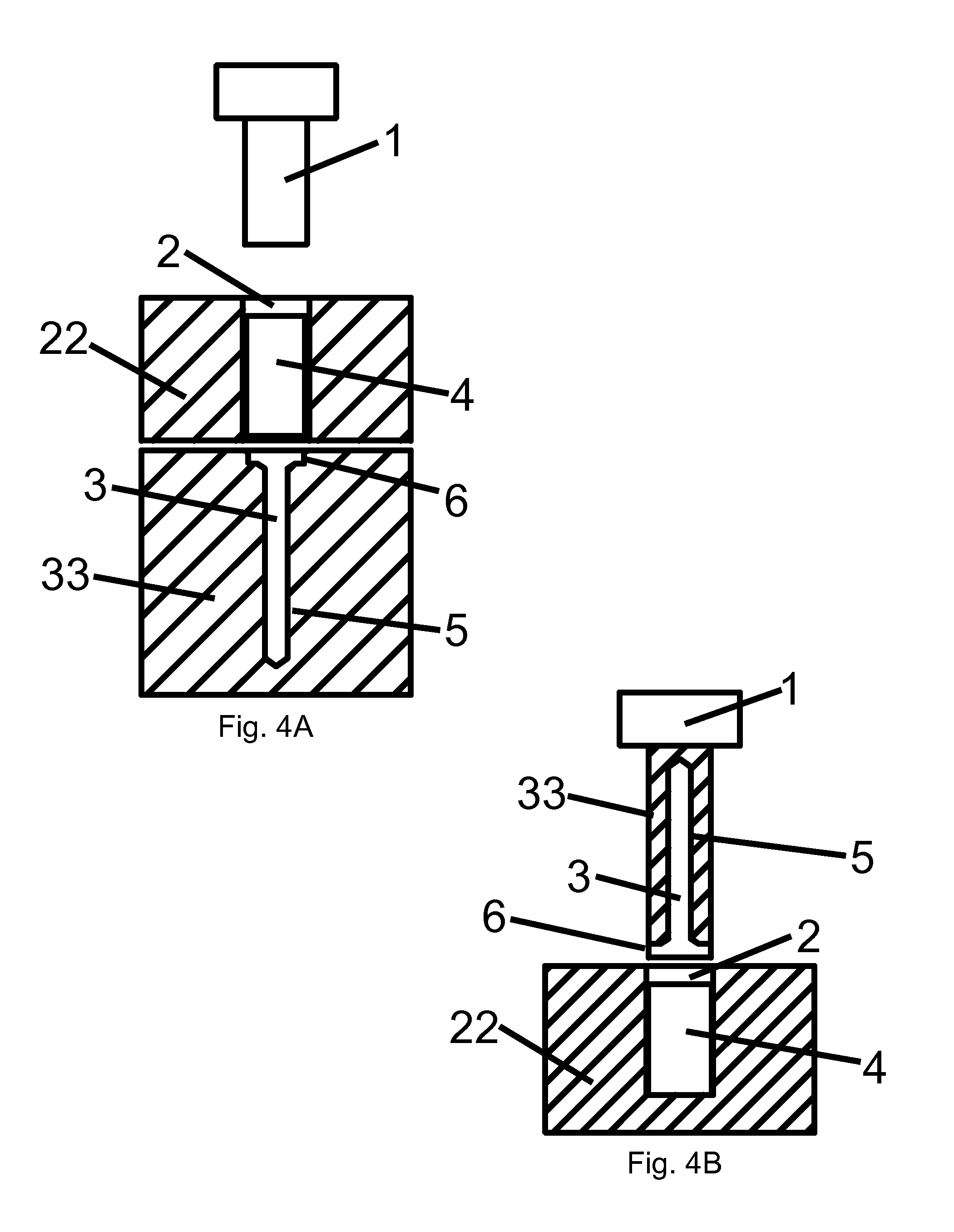Oriented polymer implantable device and process for making same
- Summary
- Abstract
- Description
- Claims
- Application Information
AI Technical Summary
Benefits of technology
Problems solved by technology
Method used
Image
Examples
example 1
[0098]Rectangular slugs were fabricated by injection molding 85 / 15 poly(L-lactide-co-glycolide). The slugs were placed into a tooling arrangement heated to 96° C. and the polymer heated to a temperature above the Tg of the polymer but below the Tm of the polymer. A ram press was used to apply pressure to the slug and force the material into the die, the die having a smaller cross-section than the slug. A draw ratio of approximately 4:1 was used. The die geometry was such that it formed a straight plate approximately 50×7×2.5 mm (L×W×T). The slug and die were cooled to a temperature sufficient to allow removal of the pressed part. The parts were evaluated to determine their bending ability in hot water (65° C.). Previous trials with high-strength oriented polymer devices made by prior art continuous processes indicated that the material was highly unstable dimensionally when heated above its glass-transition to allow it to be bent. The high-strength, oriented plate of this example wa...
example 2
[0099]Rectangular slugs were fabricated by injection molding 85 / 15 poly(L-lactide-co-glycolide). The slugs were placed into a tooling arrangement heated to 110° C. and the polymer heated to a temperature above the Tg of the polymer but below the Tm of the polymer. A ram press was used to apply pressure to the slug and force the material into the die, the die having a smaller cross-section than the slug. A draw ratio of approximately 4:1 was used. The die geometry was such that it caused the material to curve at an angle creating a bent-axis L-plate. The slug and die were cooled to a temperature sufficient to allow removal of the pressed part. The parts were evaluated to determine their bending ability and L-plate geometry retention in hot water (65° C.). This temperature is well in excess of the polymer's Tg. The high-strength, oriented L-plate was found to be much easier to bend when heated and it was found that the material maintained its thickness and length, as well as its L-sha...
example 3
[0100]Circular slugs were fabricated by extruding poly(L-lactide) rod and then cutting the rod to length using standard machining techniques. The slugs were placed into a tooling arrangement heated to 159° C. and the polymer heated to a temperature above the Tg of the polymer but below the Tm of the polymer. A ram press was used to apply pressure to the slug and force the material into the die, the die having a smaller cross-section than the slug. A draw ratio of approximately 4:1 was used. The die geometry was such that it formed a pin approximately 3.5×40 mm (Diameter × Length). The slug and die were cooled to a temperature sufficient to allow removal of the pressed part. The parts were evaluated to determine their dimensional and strength stability after heating in hot water (70° C.). This temperature is well in excess of the polymer's Tg. The parts were measured before and after immersion in hot water for 1 hour. An ANOVA analysis was performed and it was determined that there w...
PUM
| Property | Measurement | Unit |
|---|---|---|
| Temperature | aaaaa | aaaaa |
| Dimensional stability | aaaaa | aaaaa |
| Strength | aaaaa | aaaaa |
Abstract
Description
Claims
Application Information
 Login to View More
Login to View More - R&D
- Intellectual Property
- Life Sciences
- Materials
- Tech Scout
- Unparalleled Data Quality
- Higher Quality Content
- 60% Fewer Hallucinations
Browse by: Latest US Patents, China's latest patents, Technical Efficacy Thesaurus, Application Domain, Technology Topic, Popular Technical Reports.
© 2025 PatSnap. All rights reserved.Legal|Privacy policy|Modern Slavery Act Transparency Statement|Sitemap|About US| Contact US: help@patsnap.com



